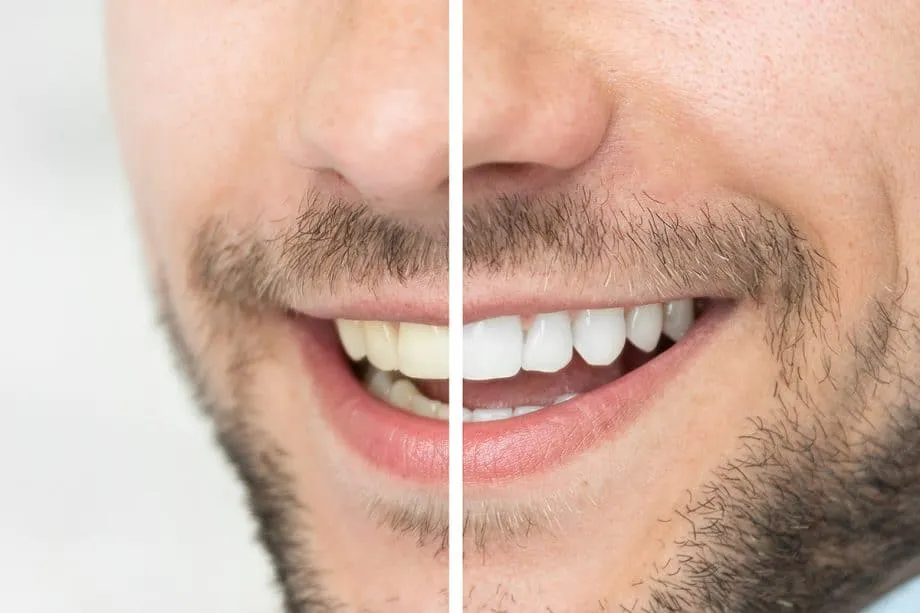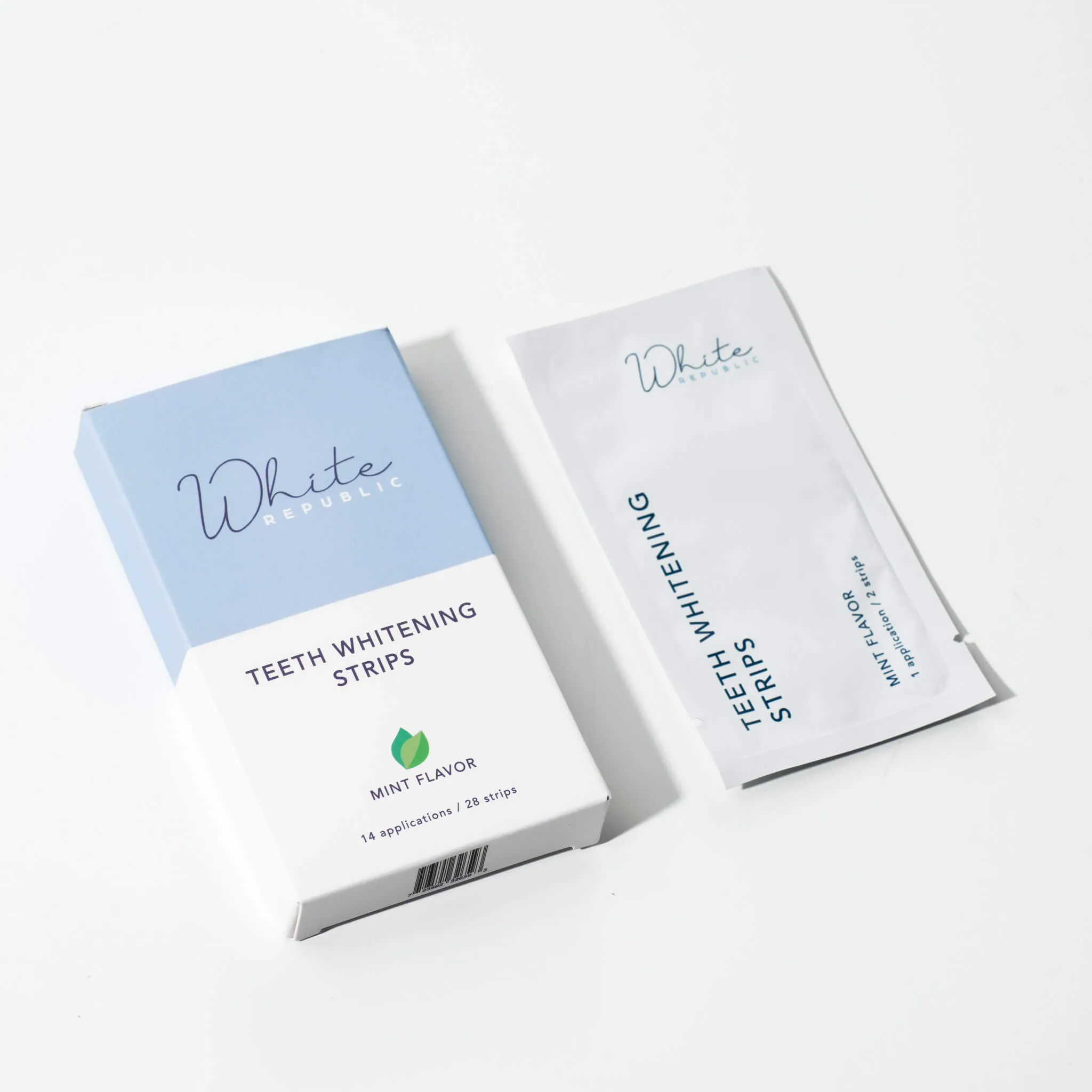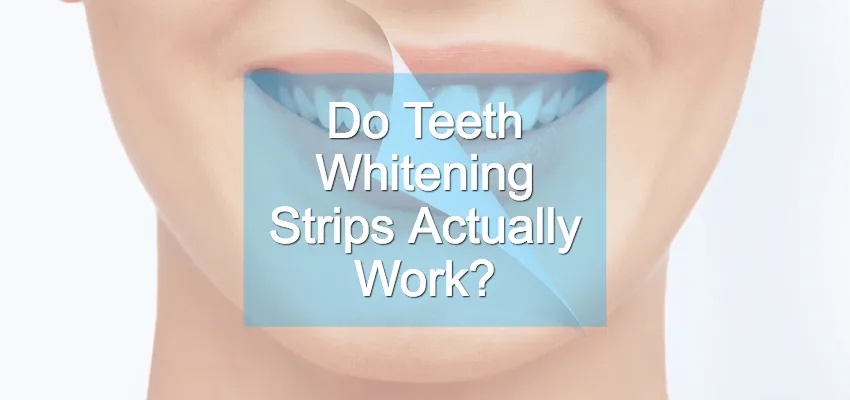What are Teeth Whitening Strips
Teeth whitening strips have become a popular method for people looking to brighten their smiles from the comfort of their homes. These strips are thin, flexible pieces of plastic coated with a whitening agent, typically hydrogen peroxide or carbamide peroxide. They are designed to adhere to the surface of your teeth, allowing the whitening agent to come into contact with the enamel. The appeal of these strips lies in their convenience, ease of use, and relatively lower cost compared to professional whitening treatments. This article delves into how effective teeth whitening strips really are, examining their functionality, benefits, drawbacks, and the factors that influence their performance.
How do Teeth Whitening Strips Work
Teeth whitening strips operate on a straightforward principle, using chemical reactions to lighten tooth discoloration. The active ingredients in these strips penetrate the enamel, breaking down the stain molecules that have accumulated over time. This process essentially bleaches the teeth, resulting in a brighter and whiter appearance. The effectiveness of this process hinges on the concentration of the whitening agent, the duration of contact with the teeth, and the type and severity of the staining present.
The Active Ingredients

The primary active ingredients in teeth whitening strips are hydrogen peroxide and carbamide peroxide. Hydrogen peroxide is a strong oxidizing agent that directly breaks down stain molecules. Carbamide peroxide, on the other hand, breaks down into hydrogen peroxide and urea; this releases hydrogen peroxide over a longer period. The concentration of these ingredients varies among different products, with higher concentrations often yielding faster results but also potentially increasing the risk of side effects, such as tooth sensitivity.
The Whitening Process
When the whitening strip is applied, the active ingredient comes into contact with the enamel. It then permeates the enamel and, through oxidation, breaks down the stain molecules. This process is most effective on extrinsic stains, those that sit on the surface of the tooth. The longer the strip remains on the teeth and the more frequently the treatment is applied, the more significant the whitening effect. However, it’s crucial to follow the instructions carefully, as overusing the strips can lead to adverse effects such as tooth sensitivity or gum irritation.
Effectiveness of Teeth Whitening Strips
The effectiveness of teeth whitening strips is a subject of much discussion, as it can vary significantly from person to person. Generally, these strips are effective for removing surface stains caused by coffee, tea, tobacco, and certain foods. However, their effectiveness is limited when dealing with deeper, intrinsic stains or severe discoloration. Results are often noticeable after a few days of use, with continued improvement over the treatment period, which typically lasts for a couple of weeks. The degree of whitening achieved can range from a few shades lighter to a more dramatic improvement, depending on individual factors.
Factors Affecting Effectiveness

Several factors influence how well teeth whitening strips work. The type and severity of the stains, the concentration of the active ingredient, and the duration of use all play crucial roles. Additionally, individual tooth structure and enamel porosity can affect the bleaching process. Those with naturally more porous enamel may experience faster and more noticeable whitening, while others may see less dramatic results. Following the manufacturer’s instructions is also paramount for achieving the best outcomes.
Severity of Staining
The severity of staining is a significant factor in determining the effectiveness of teeth whitening strips. Mild to moderate surface stains are generally more responsive to treatment than severe or deep-seated discoloration. Stains that have penetrated deep into the enamel or dentin, often caused by medication, trauma, or aging, may not be significantly improved by over-the-counter strips. In such cases, professional whitening treatments may be necessary to achieve the desired results.
Type of Stain
Different types of stains respond differently to teeth whitening strips. Extrinsic stains, such as those caused by coffee, tea, and tobacco, are typically the easiest to remove. Intrinsic stains, those originating from within the tooth, may be more resistant to bleaching. Certain stains, like those caused by tetracycline antibiotics, may require more intensive treatment to achieve a noticeable improvement.
Consistency of Use

Consistent use, as directed by the manufacturer, is key to achieving optimal results. Skipping applications or shortening treatment times can reduce effectiveness. Most teeth whitening strip treatments involve applying the strips once or twice a day for a specified period. Adhering to this schedule allows the active ingredients to work effectively and gradually lighten the teeth. The treatment duration varies, but following the recommended guidelines is crucial for achieving the desired outcome.
Advantages of Using Teeth Whitening Strips
Teeth whitening strips offer several advantages that contribute to their popularity. Their convenience, affordability, and ease of use make them an attractive option for many. They provide a cost-effective alternative to professional treatments, allowing people to improve their smile without significant expense or time commitment. Additionally, the process can be easily integrated into daily routines, requiring minimal effort and fitting seamlessly into busy lifestyles.
Convenience and Ease of Use
The convenience of teeth whitening strips is a major draw. They can be used at home, at any time that is convenient, without requiring a visit to the dentist. The application process is straightforward – simply apply the strips to the teeth and follow the instructions. This makes them a practical option for people who have busy schedules or prefer to avoid dental appointments. The ease of use also makes it easier to maintain consistency with the treatment.
Affordability

Compared to professional teeth whitening treatments, teeth whitening strips are a much more affordable option. They are readily available over-the-counter at drugstores and online retailers. The cost is typically a fraction of what you would pay for in-office treatments, making them accessible to a wider audience. This affordability allows individuals to try teeth whitening without a significant financial investment.
Disadvantages and Risks
While teeth whitening strips are generally safe and effective, they do come with some potential drawbacks and risks. These include tooth sensitivity, gum irritation, and the possibility of uneven whitening. It’s essential to be aware of these potential side effects and to follow the manufacturer’s instructions carefully to minimize risks and maximize benefits. Consulting with a dentist can also help you determine if teeth whitening strips are the right choice for your specific needs.
Tooth Sensitivity
Tooth sensitivity is a common side effect of using teeth whitening strips. The active ingredients can penetrate the enamel and irritate the nerves in the teeth, leading to temporary sensitivity to hot or cold foods and drinks. This sensitivity is usually mild and temporary, subsiding within a few days of stopping the treatment. Using a toothpaste designed for sensitive teeth can help alleviate this discomfort.
Gum Irritation

Gum irritation is another potential side effect, especially if the strips come into contact with the gums. This can result in redness, soreness, and inflammation. To minimize gum irritation, it is important to apply the strips carefully, avoiding contact with the gums. If irritation occurs, stopping the treatment or reducing the frequency of use may be necessary. Some strips are designed with a more precise fit to reduce the risk of gum contact.
Uneven Whitening
Uneven whitening is another possible outcome. This occurs when some teeth whiten more effectively than others, resulting in an inconsistent appearance. This can be due to variations in enamel thickness, the presence of fillings or crowns, or uneven application of the strips. In some cases, professional dental treatments may be needed to correct uneven whitening and achieve a uniform result.
Alternatives to Teeth Whitening Strips
Several alternatives to teeth whitening strips are available, ranging from professional treatments to home remedies. The best choice depends on individual needs, the severity of staining, and personal preferences. Exploring these alternatives can help you find the most suitable option for achieving a brighter smile.
Professional Whitening Treatments

Professional whitening treatments, such as in-office bleaching, offer the most effective results. Dentists use stronger whitening agents and can monitor the process to ensure safety and minimize side effects. These treatments can address more severe staining and provide a more uniform whitening effect. While more expensive, professional treatments are often the best choice for significant discoloration or for those seeking optimal results.
Whitening Toothpastes
Whitening toothpastes contain mild abrasives and polishing agents that help remove surface stains. They are a gentler option compared to strips and are suitable for daily use. However, they are less effective at significantly changing the color of the teeth. Consistent use can help maintain a brighter smile and prevent new stains from forming. It’s important to note that whitening toothpastes do not actually bleach the teeth.
Home Remedies
Some home remedies, such as using baking soda and lemon juice, are often promoted for teeth whitening. However, these methods can be abrasive and may damage tooth enamel if used improperly or too frequently. While they might provide some surface cleaning, they are not a reliable or recommended solution for teeth whitening. Consulting with a dentist is always best before trying any home remedies.
How to Choose the Right Teeth Whitening Strips

Choosing the right teeth whitening strips involves considering your individual needs and preferences. Several factors should be taken into account, including the severity of your stains, your budget, and your sensitivity level. Reading reviews and carefully following the instructions are also critical for achieving the best outcomes and avoiding potential problems. Taking the time to select the right product will help ensure your satisfaction with the results.
Considering Your Needs
Assess the severity of your teeth stains and what you hope to achieve. For mild stains, a lower-concentration strip may suffice. For more significant discoloration, you might need a product with a higher concentration of active ingredients. Also, consider your sensitivity level. If you have sensitive teeth, look for strips designed for sensitive teeth or consult your dentist for recommendations. Consider factors such as how long you are willing to use the product and how often.
Reading Reviews
Reading reviews can provide valuable insights into the effectiveness and safety of different teeth whitening strips. Look for reviews from other users to gauge their experiences with the product. Pay attention to comments about sensitivity, results, and ease of use. Keep in mind that individual experiences can vary, but reviews can help you narrow down your options and make an informed decision.
Following Instructions
Always carefully read and follow the manufacturer’s instructions. Proper application and adherence to the recommended treatment duration are essential for achieving the desired results and minimizing potential side effects. Do not overuse the strips, as this can increase the risk of tooth sensitivity or gum irritation. If you have any concerns, consult your dentist before starting or during the teeth whitening treatment.
In conclusion, teeth whitening strips can be an effective way to brighten your smile, especially for surface stains. However, their effectiveness depends on various factors, including the severity of the staining, the concentration of the active ingredients, and consistent use. While offering convenience and affordability, users should be aware of potential side effects such as tooth sensitivity and gum irritation. By considering your needs, reading reviews, and following the instructions carefully, you can make an informed decision and achieve a brighter, more confident smile. For best results and to address any concerns, consult your dentist before starting a teeth whitening regimen.
